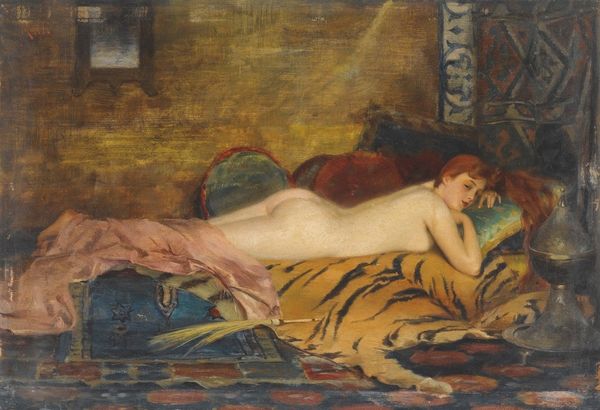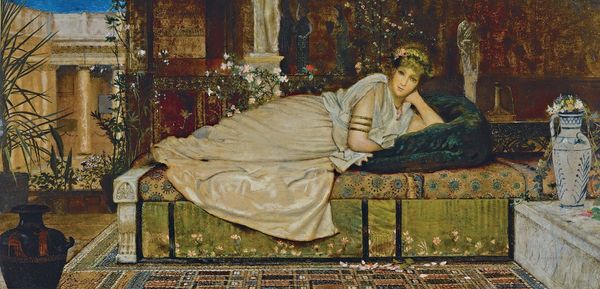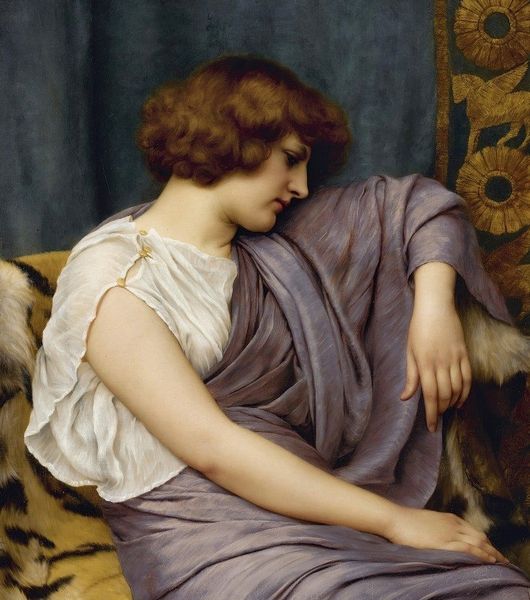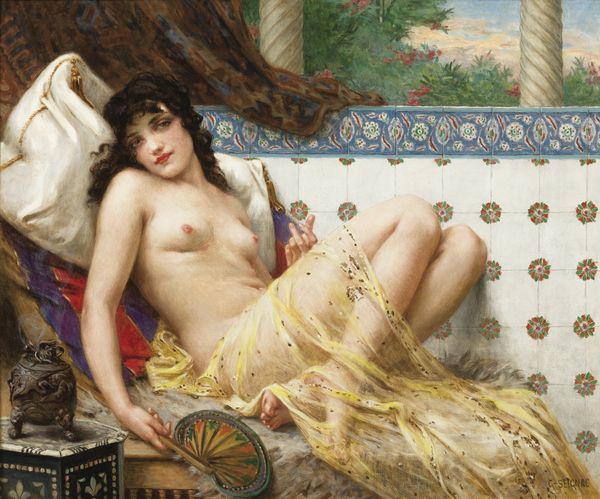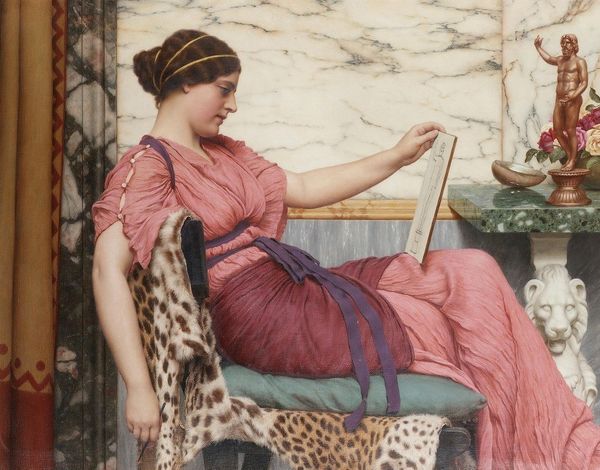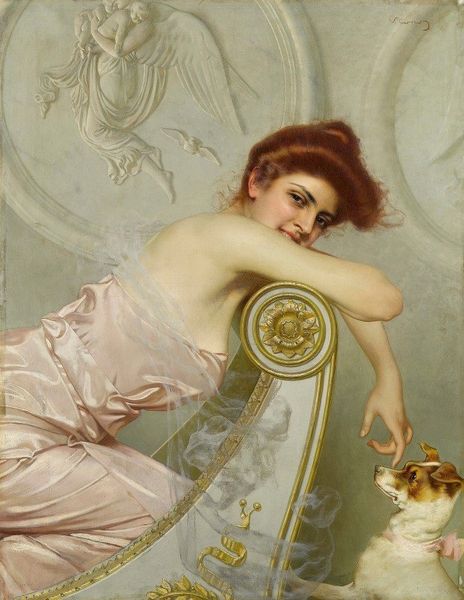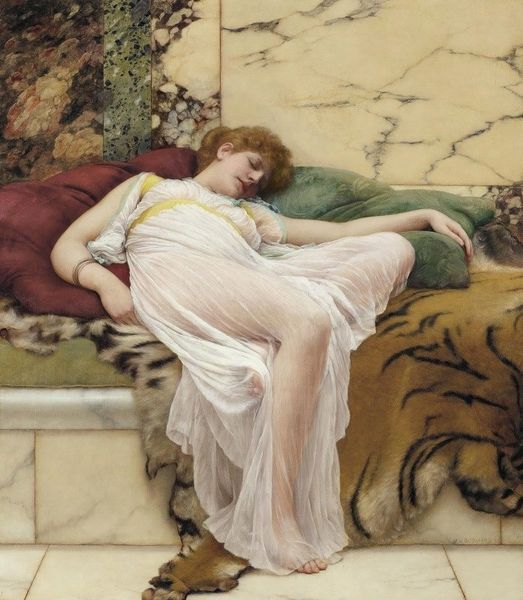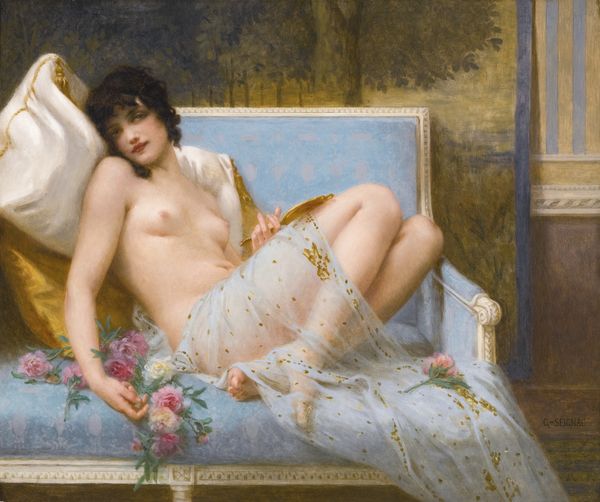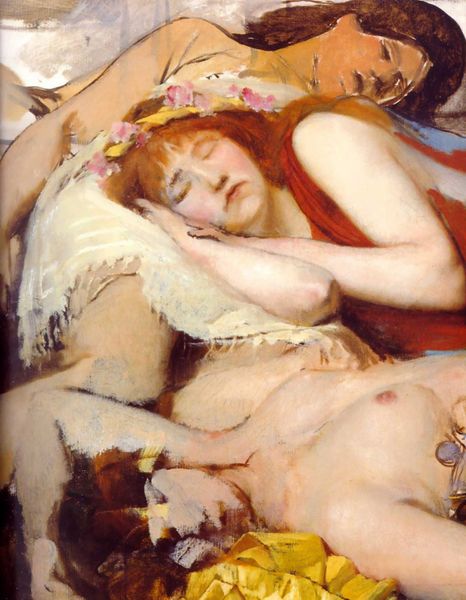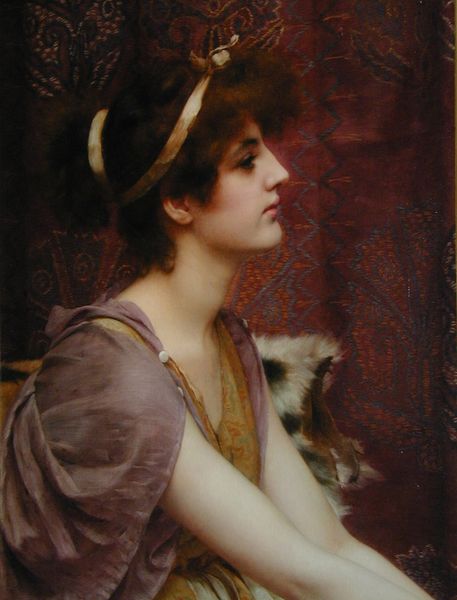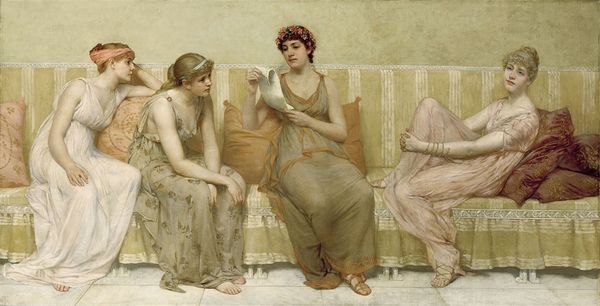
painting, oil-paint
#
portrait
#
figurative
#
painting
#
oil-paint
#
oil painting
#
orientalism
#
genre-painting
#
academic-art
Copyright: Public Domain: Artvee
Editor: Lawrence Alma-Tadema’s “Cherries,” painted in 1873, shows a woman reclining on what looks like a tiger skin rug. The overall mood is one of languid opulence; she seems bored and listless. What do you see in this piece, beyond the surface of it? Curator: Alma-Tadema certainly presents a vision of classical luxury, but let's think critically about what this represents. The “orientalism” style often exoticized and sexualized women within colonial power structures. This image, with its emphasis on leisure and the trappings of wealth—the tiger skin, the classical setting—invites us to consider whose gaze is privileged. Where is this woman positioned within those systems of power? Editor: So, it's not just a pretty picture; it’s about power dynamics? Is she a subject of someone's fantasy, perhaps? Curator: Precisely. And we need to ask ourselves about the representation of women, particularly in relation to the male gaze. Consider the artistic choices. The title focuses on the "Cherries" and draws attention to youth and beauty; her pose almost seems to offer herself up for consumption. The very act of gazing becomes a political act, perpetuating specific ideas about gender and class. How do you feel about the way her lassitude is presented? Does it read as empowering or disempowering? Editor: I guess I hadn’t thought about it that way. Seeing her idleness romanticized, I initially envied her freedom from labor, but now I wonder if it reflects her confinement in a gilded cage. Curator: That's a brilliant observation. It exposes the complicated relationship between seeming privilege and actual constraint. Thinking about such images through the lens of contemporary feminist theory allows us to see not just a beautiful woman, but the systems that construct and confine her. Editor: I'll never look at these types of paintings the same way again. It's amazing how much historical and cultural context shapes our understanding. Curator: Indeed. It’s about looking beyond the surface to uncover the complex and often problematic narratives embedded within the artwork.
Comments
No comments
Be the first to comment and join the conversation on the ultimate creative platform.
